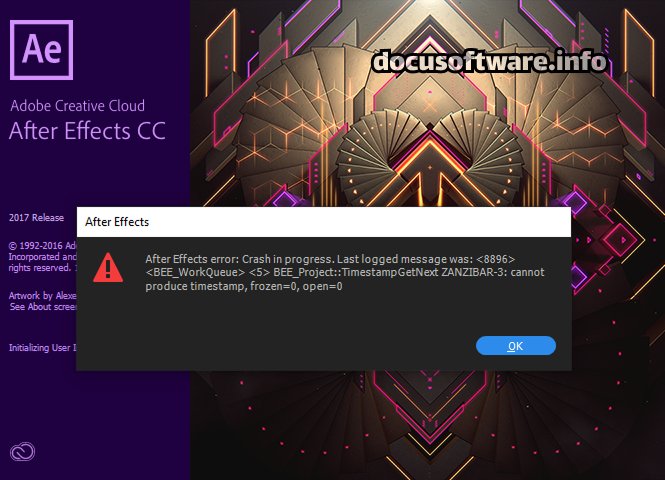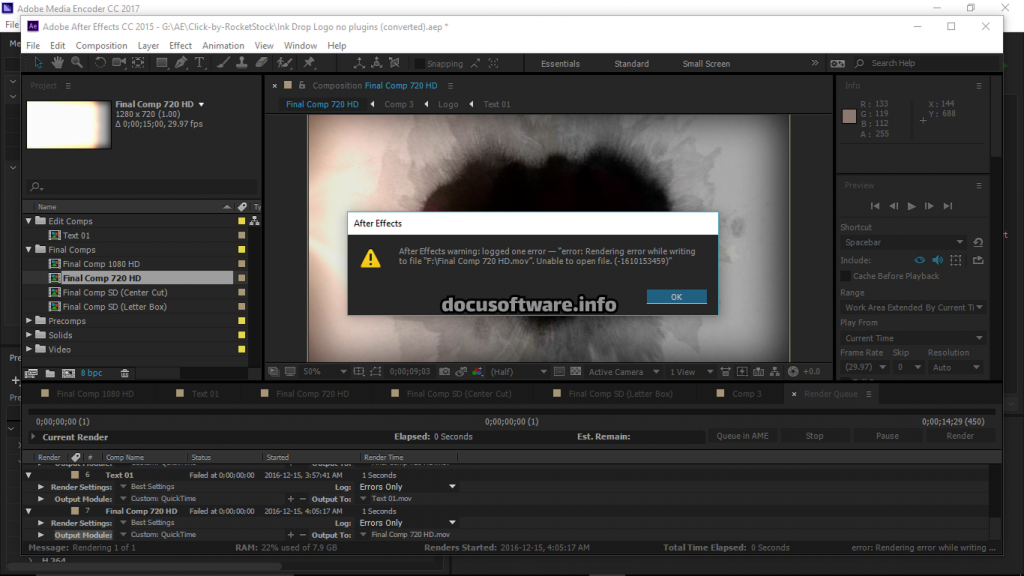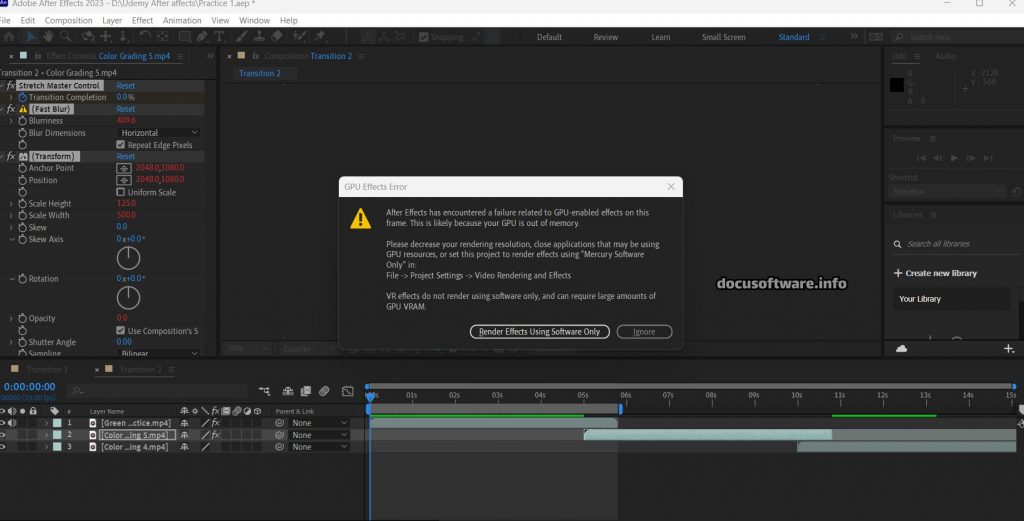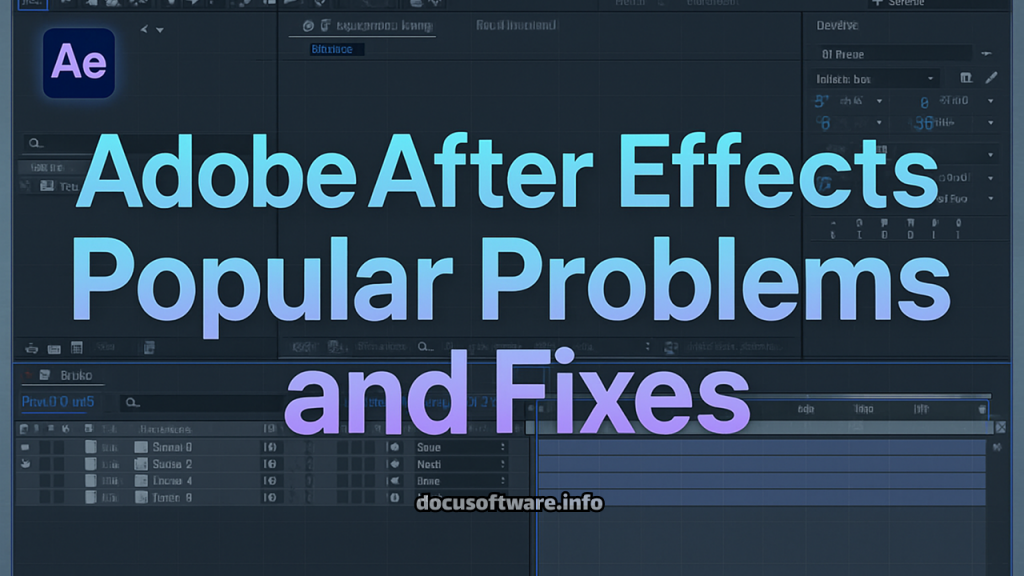Introduction: Navigating After Effects Technical Challenges
Adobe After Effects remains the industry-standard motion graphics and visual effects software, powering countless professional productions worldwide. However, even this powerful creative suite application encounters technical difficulties that can disrupt workflows and delay project deadlines. This comprehensive troubleshooting guide addresses the most prevalent After Effects issues, providing practical solutions backed by professional expertise and community-tested fixes.
Whether you’re experiencing unexpected crashes, rendering failures, or performance bottlenecks, understanding these common problems and their solutions can transform your post-production experience from frustrating to fluid.
Critical System Requirements and Performance Optimization
Understanding Hardware Specifications for Stable Performance
Before diving into specific issues, ensuring your system meets Adobe’s recommended specifications forms the foundation of stable After Effects operation. The 2025 version demands considerable computational resources:
Minimum Requirements:
- Processor: Multicore Intel or AMD processor with 64-bit support
- Operating System: Windows 10/11 (64-bit) or macOS 12.0 or later
- RAM: 16 GB minimum (32 GB recommended for complex projects)
- GPU: 2 GB VRAM minimum (8 GB or higher for GPU acceleration)
- Storage: Fast SSD with 15 GB available space plus cache requirements
Resource Allocation Best Practices
Optimal performance requires strategic resource management. Navigate to Edit > Preferences > Memory to allocate appropriate RAM for After Effects while maintaining system stability. Setting aside 3-6 GB for other applications prevents system-wide freezes during intensive rendering tasks.
Most Common After Effects Problems and Professional Solutions
1. Application Crashes During Startup or Project Opening

Problem Description: After Effects crashes immediately upon launching or when opening specific project files, often displaying error messages or freezing without warning.
Root Causes:
- Corrupted preferences files
- Incompatible third-party plugins
- Outdated graphics drivers
- Damaged project files
- Insufficient system resources
Professional Solutions:
Reset Preferences: Hold Ctrl+Alt+Shift (Windows) or Command+Option+Shift (macOS) while launching After Effects. This creates fresh preference files, resolving many startup crashes.
Safe Mode Launch: Starting After Effects in Safe Mode temporarily disables all third-party plugins, allowing you to identify problematic extensions. Access this through the Creative Cloud desktop application’s advanced settings.
Graphics Driver Updates: Ensure your GPU drivers match Adobe’s compatibility requirements. NVIDIA Studio drivers often provide better stability than Game Ready versions for creative applications.
2. Rendering Failures and Export Errors

Problem Description: Projects fail to render completely, crash during export, or produce corrupted output files, particularly when using Media Encoder dynamic linking.
Technical Analysis: Rendering failures typically stem from memory management issues, codec incompatibilities, or specific effect processing errors. The multi-frame rendering engine introduced in recent versions can exacerbate these problems on systems with limited resources.
Comprehensive Solutions:
Memory and Cache Management:
- Purge all memory and disk cache (Edit > Purge > All Memory & Disk Cache)
- Clear media cache database through preferences
- Allocate dedicated cache folders on fast SSDs
- Implement incremental rendering for complex compositions
Alternative Rendering Workflows:
- Export directly from After Effects Render Queue instead of Media Encoder
- Use image sequence exports for maximum reliability
- Disable multi-frame rendering for problematic projects
- Render in segments and combine in post
3. Missing H.264 Codec and Export Format Issues
Problem Context: Users cannot find H.264 export options in the Render Queue, limiting distribution-ready output formats.
Technical Explanation: Adobe restructured codec availability between Render Queue and Media Encoder Queue, optimizing workflow efficiency while maintaining quality standards.
Solution Implementation:
Access H.264 through proper workflow channels:
- Select Composition > Add to Adobe Media Encoder Queue (not Render Queue)
- Configure export settings within Media Encoder interface
- Utilize preset templates for consistent output quality
- Implement watch folders for automated encoding workflows
4. GPU Acceleration and Display Problems

Symptom Identification:
- Black composition windows
- Distorted preview rendering
- “Display Acceleration Disabled” warnings
- Intermittent UI corruption
Root Cause Analysis: GPU acceleration conflicts arise from driver incompatibilities, insufficient VRAM, or hardware acceleration settings mismatches.
Resolution Strategy:
Disable Hardware Acceleration (Temporary Fix):
- Navigate to Preferences > Display
- Deselect “Hardware Accelerate Composition, Layer, and Footage Panels”
- Access File > Project Settings > Video Rendering and Effects
- Switch to “Mercury Software Only” rendering
Permanent Solutions:
- Update to manufacturer-recommended professional drivers
- Increase GPU memory allocation in system settings
- Verify CUDA/OpenCL compatibility versions
- Consider dedicated workstation graphics cards for professional workflows
5. Expression Errors and Scripting Failures
Problem Manifestation: JavaScript expressions fail to evaluate, producing error messages or unexpected animation behaviors.
Technical Background: After Effects transitioned from ExtendScript to modern JavaScript engine, creating compatibility issues with legacy expressions.
Resolution Approach:
- Switch Expression Engine:
- Open Project Settings > Expressions
- Change from JavaScript to Legacy ExtendScript
- Validate expression syntax for selected engine
- Expression Debugging:
- Utilize expression error indicators in timeline
- Implement try-catch blocks for error handling
- Reference updated expression documentation for syntax changes
6. Performance Degradation and Slow Previews
Performance Indicators:
- Stuttering RAM previews
- Extended rendering times
- Unresponsive UI during playback
- Excessive memory consumption
Optimization Techniques:
Preview Settings Adjustment:
- Reduce preview resolution (Quarter or Third)
- Enable Skip frames for real-time playback
- Utilize Draft 3D for complex scenes
- Implement region of interest for focused previewing
System-Level Optimizations:
- Migrate to SSD storage for cache and footage
- Disable unnecessary background applications
- Configure dedicated GPU for After Effects processing
- Implement proxy workflows for high-resolution footage
Advanced Troubleshooting Strategies
Project File Recovery Methods
When encountering corrupted project files:
- Import into New Project: Create blank project and import corrupted file as footage
- Incremental Save Recovery: Access auto-save versions from project folder backups
- XML Export/Import: Export project as Final Cut Pro XML for structure preservation
Plugin Conflict Resolution
Systematic Plugin Testing:
- Move all plugins to temporary folder
- Reintroduce plugins individually
- Document compatibility issues
- Update to latest plugin versions
- Contact developers for compatibility patches
Network Rendering Optimization
For teams utilizing render farms:
- Implement consistent codec libraries across nodes
- Synchronize plugin versions network-wide
- Configure shared cache locations
- Utilize aerender command-line rendering for automation
Preventive Maintenance Best Practices
Regular System Maintenance
Daily Practices:
- Clear cache before major projects
- Verify available storage space
- Monitor system resource usage
- Save incremental project versions
Weekly Maintenance:
- Update Creative Cloud applications
- Clean media cache databases
- Verify backup integrity
- Review error logs for patterns
Monthly Optimization:
- Update system drivers
- Defragment traditional hard drives
- Clean temporary system files
- Audit installed plugins and scripts
Project Organization Standards
Implementing structured workflows prevents numerous issues:
- Maintain organized project panels
- Use consistent naming conventions
- Implement color-coding systems
- Create project templates for repeated tasks
- Document custom expressions and effects
Version-Specific Considerations
After Effects 2025 Known Issues
Recent versions introduced specific challenges requiring targeted solutions:
- Optical flow rendering failures: Disable effect before final render
- Bluetooth connectivity disruptions on Windows 11: Update system drivers
- Expression compatibility with legacy projects: Enable backward compatibility mode
- Multi-frame rendering crashes: Adjust thread allocation in preferences
Legacy Version Support
Maintaining older versions alongside current releases provides fallback options:
- Install multiple versions through Creative Cloud
- Maintain separate preference folders
- Document version-specific project requirements
- Test compatibility before upgrading production projects
Professional Workflow Recommendations
Error Documentation Protocol
Establishing systematic error tracking improves long-term stability:
- Capture Error Details:
- Screenshot error messages
- Note preceding actions
- Document system state
- Save crash logs
- Pattern Recognition:
- Identify recurring issues
- Track problem frequency
- Correlate with specific operations
- Monitor after implementing fixes
Team Collaboration Standards
For multi-user environments:
- Standardize plugin installations
- Synchronize color management settings
- Implement version control systems
- Create shared troubleshooting databases
- Establish rendering queue priorities
Conclusion: Mastering After Effects Stability
Successfully managing After Effects technical challenges requires combining proactive system maintenance, strategic workflow design, and responsive troubleshooting techniques. By understanding common problems and implementing professional solutions, creative professionals can minimize disruptions and maintain productive post-production pipelines.
Remember that stability issues often result from cumulative factors rather than single causes. Systematic approaches to problem-solving, combined with regular maintenance practices, create resilient production environments capable of handling demanding creative projects.
Stay informed about updates, participate in community forums, and maintain comprehensive documentation of your troubleshooting experiences. This knowledge investment pays dividends through reduced downtime and enhanced creative output quality.
